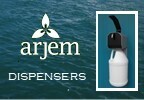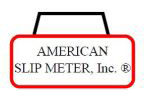Legionnaires’ Deaths Trigger Calls for Safety |
|
| Contributed by BSM Staff | |
EDINBURGH, UK -- In light of the recent Legionella outbreak in New York City, a water safety expert is alerting facilities across the country to the need to go beyond basic proactive strategies to better protect against what is becoming a growing public health risk. According to official reports, three people have died and at least 70 individuals were diagnosed with Legionnaires’ disease in a cluster that broke out in the Harlem area of New York City last month. The New York City Department of Health reports that remediation efforts have been completed for all 11 cooling towers that initially tested positive for Legionella pneumophila -- the bacteria responsible for causing Legionnaires’ disease. This latest outbreak comes amid a sharp and sustained rise in Legionella risk. In the United States, cases of Legionellosis have increased by nearly 1000 percent over the past two decades. While experts continue to investigate the underlying causes, a growing body of evidence points to climate change, rising temperatures, and increasingly complex water systems as key contributors. “We are deeply saddened to learn that three people have now lost their lives and 70 have been diagnosed in connection with the Legionnaires’ disease outbreak in Harlem,” said Greg Rankin, CEO of Hydrosense, a maker of test kits for Legionella. “Our thoughts are with the victims, their families, and the affected community. “The identification of 11 cooling towers with Legionella pneumophila highlights the ongoing risk posed by untreated or poorly maintained water systems. While we commend the NYC Department of Health for completing swift remediation, the reality is that this tragic situation reinforces a critical truth - early detection and proactive prevention can help to save lives.” Legionnaires’ disease is a potentially fatal lung infection caused by inhaling droplets of water contaminated with Legionella bacteria. The bacteria can be found in a wide range of man-made water systems, including cooling towers, HVAC systems, taps and showers. While Legionella can exist throughout the entire year, the bacteria thrive in water temperatures between 68° F and 113° F, making the summer a particularly high-risk period. Hydrosense remains committed to helping building owners, facility managers, and municipalities detect Legionella before it becomes a crisis. Its rapid, on-site testing solutions can identify Legionella in water systems within 25 minutes - empowering faster action and better protection for communities. Greg adds: “These are unprecedented times. Global temperatures are rising, water systems are becoming increasingly complex, and the way we use buildings is evolving - all of which contribute to a growing Legionella risk. Every outbreak we witness, like this recent and incredibly concerning one in Harlem, serves as a tragic reminder that traditional remediation methods, including routine monitoring and lab-based testing, are no longer enough. “At Hydrosense, we believe that early detection through regular rapid testing is our strongest line of defence. It empowers facilities to respond promptly to contamination, significantly minimizing the risk of exposure, reducing harm, and ultimately saving lives. “The reality is, waiting for symptoms means waiting too long. By the time someone is hospitalized with Legionnaires’ disease, the window for prevention has already closed. It’s clear that the scale of the Legionella threat is evolving faster than we are and to effectively tackle it, we must shift our approach from reactive to proactive – and quickly.” Hydrosense is a pioneer in the rapid testing industry. They have developed the world’s fastest on-site rapid Legionella test to detect all Legionella pneumophila serogroups 1-15. For more, go to hydrosense-legionella.com.
|
|






